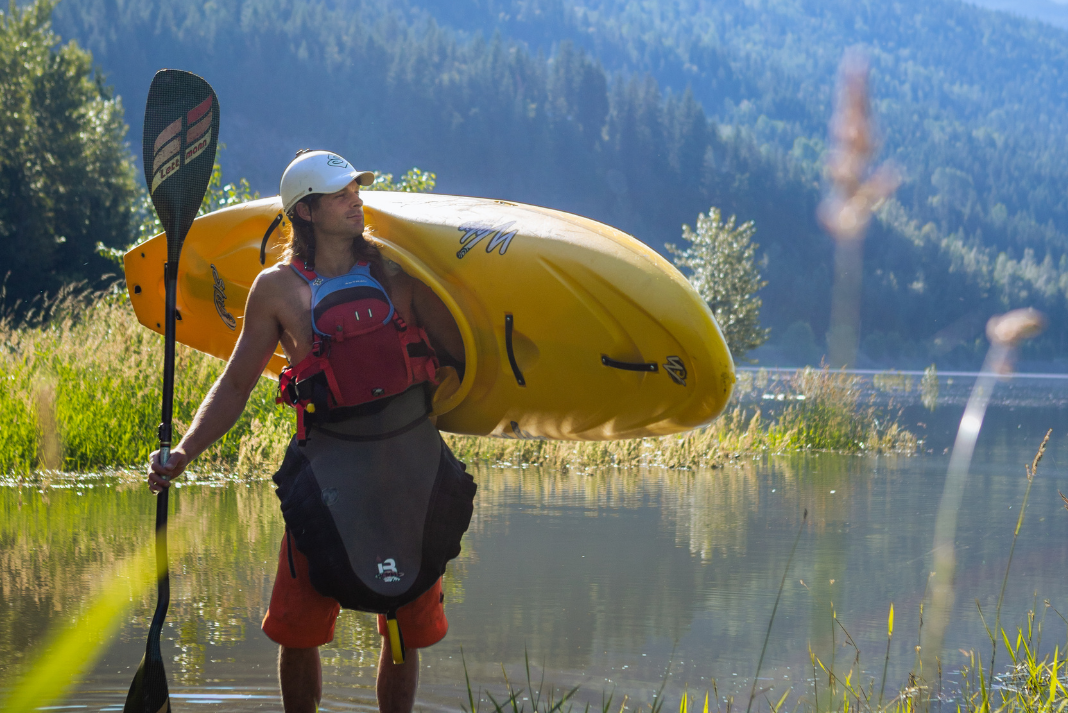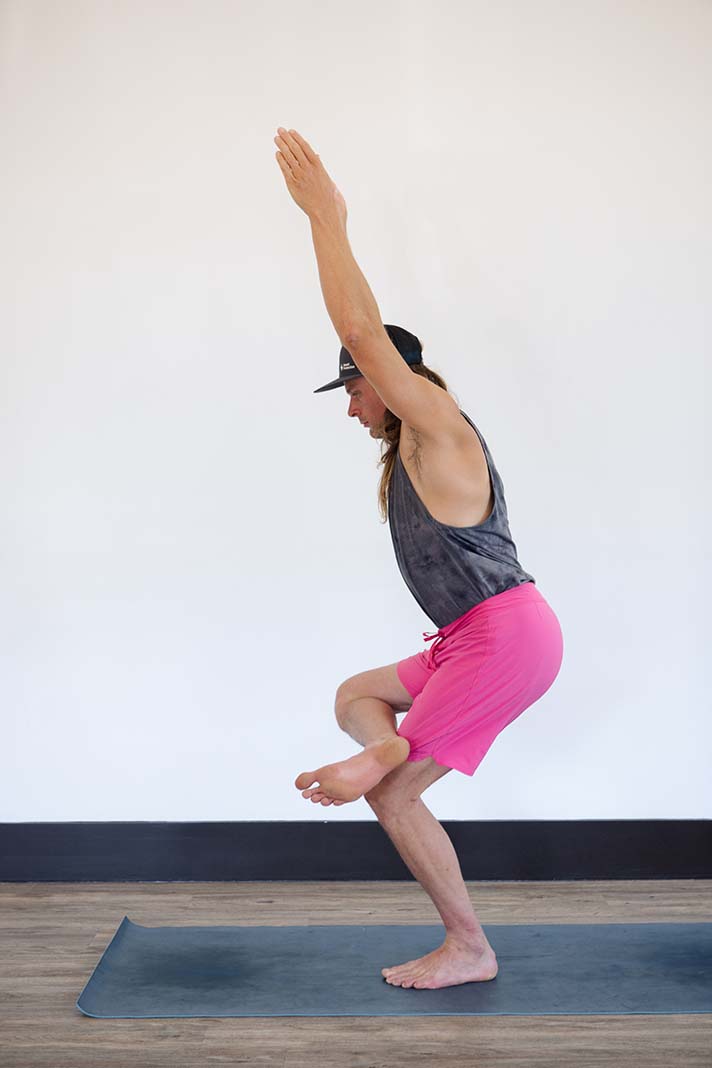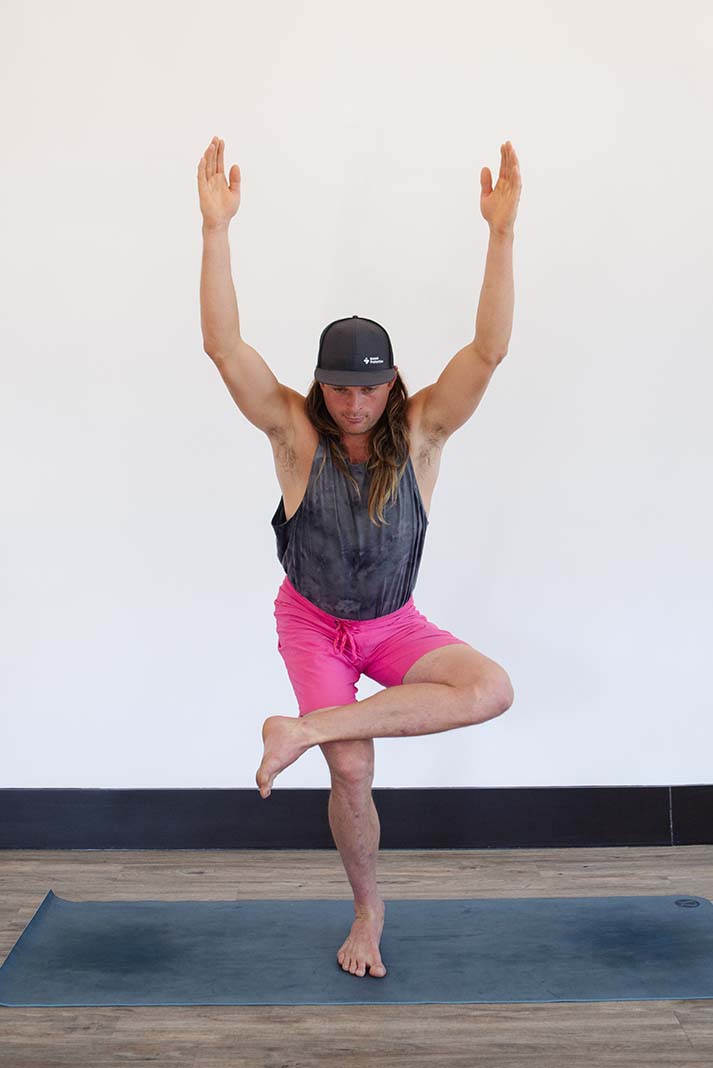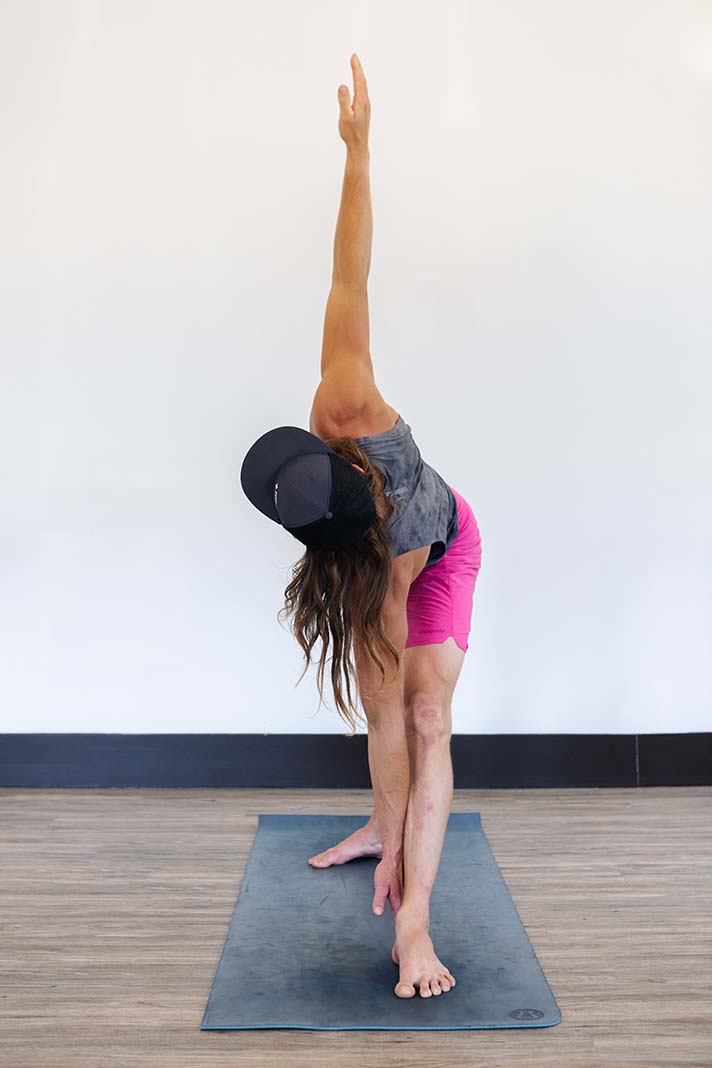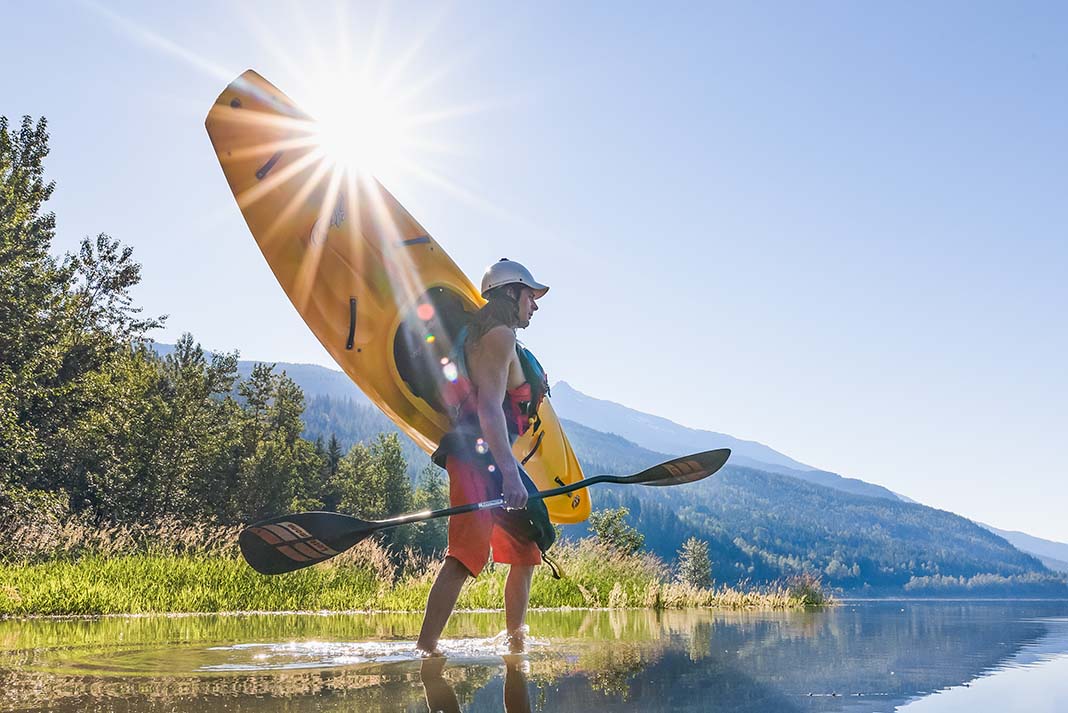Products You May Like
When I was 22, my lower back often flared up to the point I struggled to stand up straight. Sometimes first thing in the morning, I crawled around my room to warm up enough just to stand. Then, I started doing yoga in secret while working on drilling rigs in Alberta. I wanted to ease my pain and not trade my health for the money I was earning to go on kayaking trips.
Yoga is an excellent way to challenge your strength and balance, and increase your flexibility. It can prepare you for a day of paddling, or help you recover from one. A paddler’s core is constantly engaged, whether sitting or standing. The hip flexors, pelvis, groin and glutes get taxed constantly but are often forgotten until they scream in discomfort. Combine these postures with smooth, relaxed nose inhalations and exhalations to mobilize and strengthen the body while relieving tension. I still get sore, but now I know what to do to care for and even prevent it.
3 yoga poses for balance
1 Tree pose
From standing, fix your gaze on a spot on the ground 10 feet in front of you. Bring your left heel above your right ankle, toes touching the mat (1). Reach arms straight above you or open a little wider like branches. Challenge the posture by placing your left foot on your right calf (2) or above the knee (3). Or, just close your eyes. Take five breaths. Repeat on the opposite side.
2 One-legged chair pose
From standing, keep your back as straight as possible while bending both knees and sitting back into an invisible chair. Fix your gaze 10 feet in front of you. Bring the left ankle above the right knee and continue to sit into the posture. Reach arms above your head. Take five breaths. Repeat on the opposite side.
3 Triangle pose
From standing at the top of the mat, take a three-foot step back with your left foot, raise your arms shoulder height with palms open, and rotate your upper body 90 degrees, so arms and legs are parallel. Open the left foot 90 degrees, so your left heel is in perpendicular alignment to the right. Attempt to keep the arms in a straight line while lowering your right hand to your shin, or fingers to the ground on the inside of your right ankle. Look up to the sky and take five breaths. Use your core to come up and return to the front of the mat, facing the same direction you started. Repeat on the opposite side.
3 yoga poses for strength
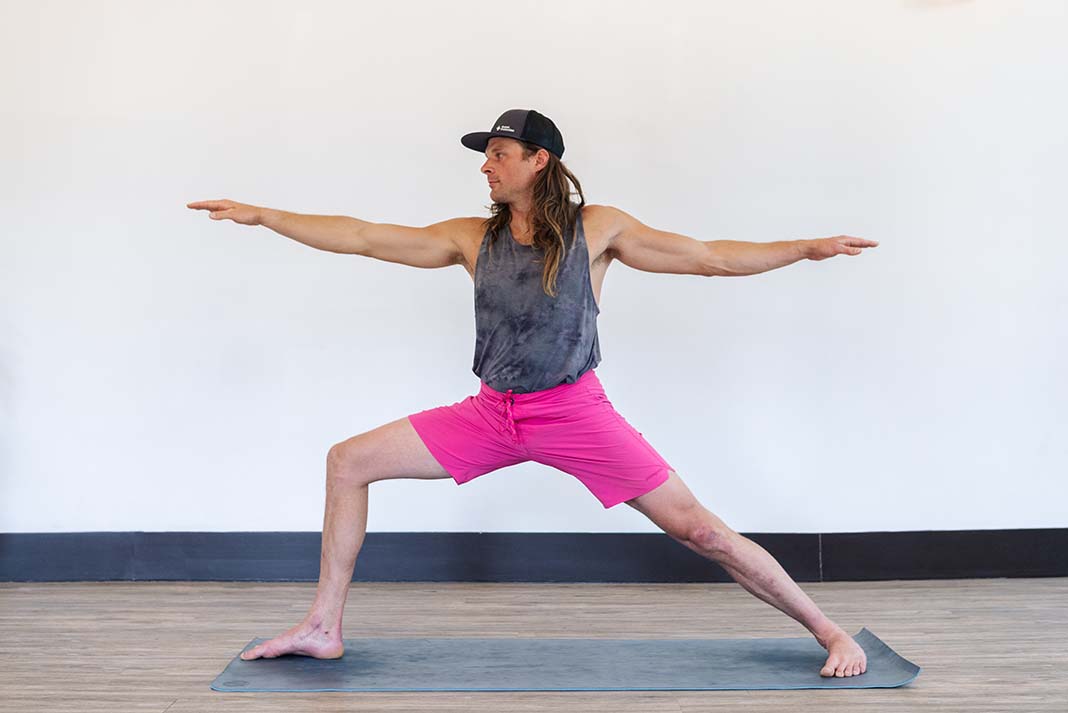
1 Warrior 2 pose
From a standing position, take a five-foot step back with your left leg—maybe more if you’re leggy. Turn the left foot out 90 degrees, so it’s parallel to the back of the mat, and so the middle of the left foot lines up with the right heel. Turn chest and hips to the left while reaching right arm straight over the right leg and left arm straight back over the left leg, parallel to the floor. Bend into the right knee, aiming for 90 degrees. Sink into it. Look past your right hand’s fingers. Try to keep your spine vertically stacked over hips. Take five breaths. Pivot your feet to the opposite direction to perform the same pose looking over your left hand. Take five breaths. Return to your wide stance, then return to standing.
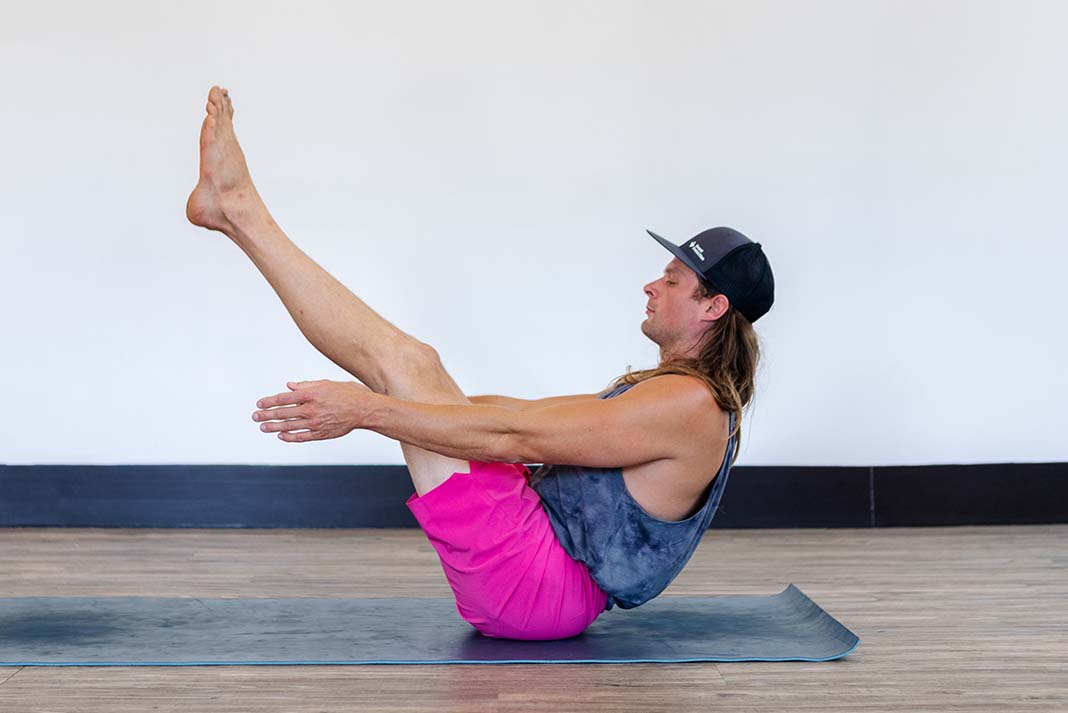
2 Boat pose
From your back, bend your knees and place flat feet on the ground close to your butt. Use your hands below your knees to pull your straight spine off the ground. Stay here or extend your arms, palms facing each other, parallel to the floor. Stay here or lift both legs so your calves also parallel the floor. Stay here or extend your legs out at a 45-degree angle for five breaths. Lower and repeat five times. This core exercise is excellent for boat control.

3 Plank
Start with hands under shoulders, knees under hips, and toes tucked under heels. Straighten your knees, so your legs are straight and engage the core more by bringing your navel closer to your spine. Take five breaths, or hold for 30, 45 or 60 seconds. Relax by returning to the four-point base. Repeat three to five times.
3 yoga poses for flexibility

1 Frog pose
From the hands and knees position, create a greater distance between your knees and feet. Open the ankles so the inside of your feet are on the ground. Look at your legs; aim for a 90-degree bend in each leg. Attempt to keep the back level and hips from coming forward or back. Take 10 breaths. To come out, slowly move the hips forward first and return to the hands and knees position.

2 Shoulder drops
From your hands and knees, extend both arms out to the side while still supporting your torso. Drop the right shoulder and right cheek to the ground, then alternate sides. Exhale down, inhale up. Repeat as many times as you want. Be gentle.
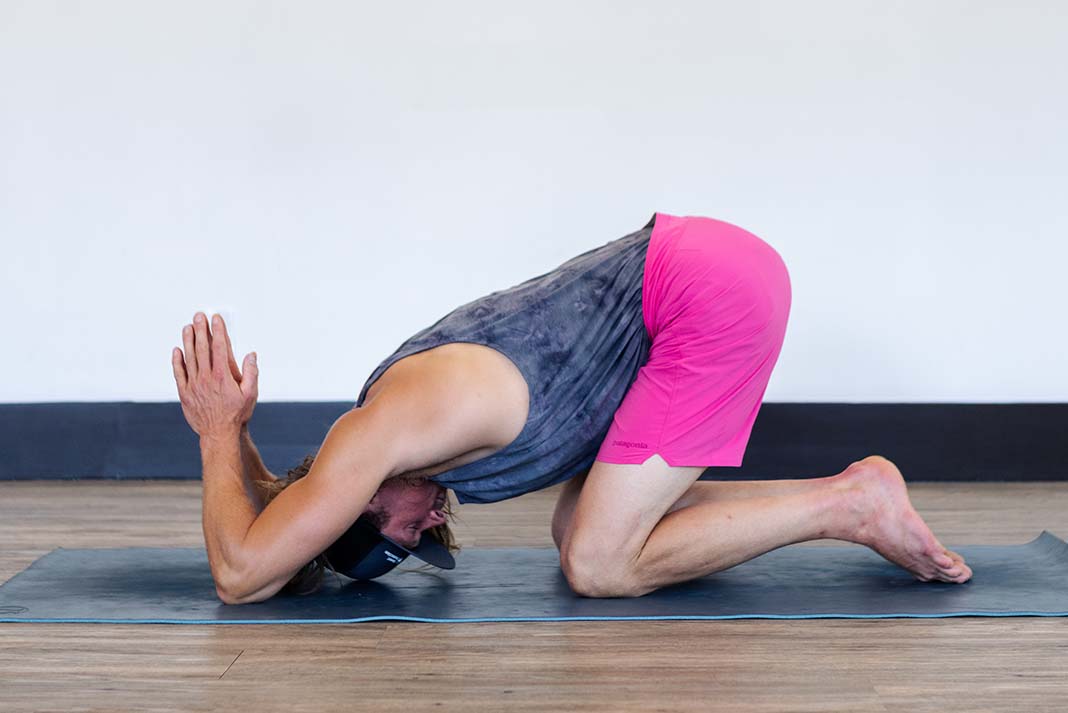
3 Child’s pose and prayer hands
From hands and knees position, untuck toes, so the tops of feet connect with the ground. Sit back on your heels, then bring your forehead to your mat. Reach the arms forward for a stretch. Adjust the distance between your knees for comfort. For an added stretch, bend your elbows, point your fingers straight up, and bring your palms together. Take five breaths. Return to child’s pose and repeat three times.
Benny Marr’s yoga routines for paddlers
40-minute follow-along routine
Whether it’s for rehab or prehab, these tailored-to-paddlers stretches will help prevent soreness and injury.
5-minute paddling warm-up routine
Professional whitewater kayaker Benny Marr reveals his ultimate pre-paddle routine to get you loose, limber, and ready for a great day out on the water. Just as you wouldn’t drive on the highway without performing some regular oil changes, you shouldn’t take to the water without giving your paddling muscles some regular tune-ups, too.
These simple, beginner-friendly movements will not only help warm up your hips, shoulders, and core—they will also reduce your risk of injury or muscle soreness. You’re going to want to bookmark this one!
Yoga is an excellent way for paddlers to build strength and balance and increase flexibility. | Feature photo: Tom Poole
